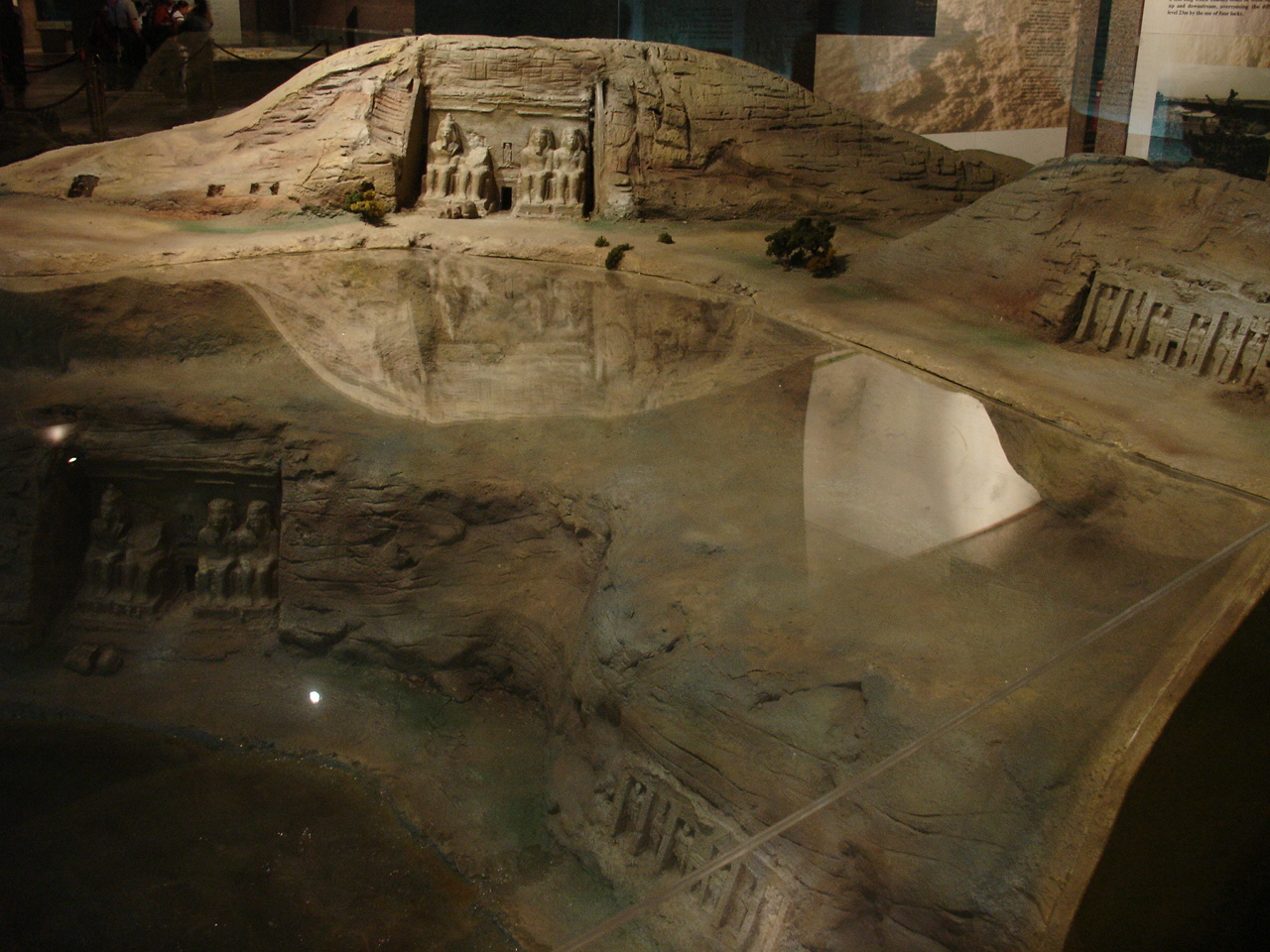06 June 2012
During the English Summer Holidays (my friend was a teacher) we decided to undertake a tour of Egypt, because we could.
Though I have a strange family connection with Egypt, I knew this tour wouldn't cover that. Instead, it was an Ancient History tour, which appealed to me even more. Having grown up reading Egyptian mythology and ancient history in my spare time, I was keen to see for myself the major monuments that exist besides the Pyramids and Sphinx. Included in this were the two temples at Abu Simbel.
The tour we were on took us as far as Aswan, however if we were willing to wake especially early, there was an optional tour down to Abu Simbel. This meant a 300km journey south to within spitting distance of the Egyptian border with Sudan, complete with a police escort for a wander in the morning sun before we climbed back onto the bus for the return journey back to Aswan to continue with the standard part of the tour.
I cannot emphasis enough just how 'worth it' this trip was. Abu Simbel is spectacular.
On the outside, the Great Temple is guarded by four depictions of the Pharaoh Ramesses II, one of whom's face is lying on the ground at his feet.
The façade of the Small Temple depicts three representations each of Ramesses II and his Queen/Chief Consort Nefetari.
Within the Great Temple, eight representations of Osiris stand guiding visitors into the next room and beyond to the sanctuary where the three gods and the Pharaoh are seated.
The temples were rediscovered by the western world in 1813, subsumed by the shifting desert sands. In 1817 Giovanni Belzoni was able to remove enough sand to enter the temple. Over time all the sand around the temples was removed exposing the four seated Pharaohs of the façade. Some transcripts of letters and descriptions from the time are available here.
While the temples are amazing in their own right, what is even more spectacular is that while you are looking at the real deal, you are not looking at the real deal in its original location.
 |
| as drawn by Francois Gau in 1819 |
The building of the Aswan dam was scheduled to flood the southern part of the Nile river resulting in the complete submersion of many temples and monuments from Egypt's history. Rather than lose the history to progress, the decision was made to relocate each of the threatened monuments to higher ground.
Between 1964 and 1968, each monument was carefully sliced up into individual blocks, weighing on average 20 tonnes, and numbered so that these pieces could be replaced in exactly the right position at the new location 180 metres higher and 60 meters back from the river's edge.
They even replicated the collapsed colossal of the great temple as opposed to restoring it to its original glory. The face had initially fallen from this seated statue soon after its construction, and so for the majority of history the head had sat in the sand at the statue's feet.
Once you are aware of the site's history, you may start to notice the fine lines that crisscross the temple's façade. Yes there are lines, as the monument did have to be divided into blocks, but the moving appears to have been achieved as seamlessly as possible; there are no noticeable widths of mortar to replace façade damaged in the process.
| The unification of Upper and Lower Egypt symbolised by the unification of the Lotus (of Upper Egypt) and the Papyrus (of Lower Egypt) as held by the hermaphroditic pot-bellied gods of the Nile. |
In addition to the beautiful details carved into the temple walls, the whole temple itself was carved at just the right angle to ensure that on October 22 and February 22 each year (purportedly Ramesses II's birthday and/or coronation) the sun shone through the doorway and antechambers to illuminate the figures carved on the back wall. that of Ramesses II would be illuminated equally with that of Amun and Ra-Horakhty, while Ptah, often depicted in the shrouds of mummification and associated with death, remains in the dark.
With the relocation of the temples, this phenomenon still exists but has moved by a day or two.
Now, the temples sit above Lake Nassar still looking out over the expanse of the Nile, just from a little higher. It is hard to believe that the murky waters below our feet may have once subsumed these temples preserving and/or irreparably damaging them but ultimately removing them from our appreciation and our study.








No comments:
Post a Comment